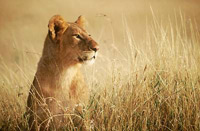
Monarch (Mariposa Monarcha) in Mexico, Jan. 2004. This mosaic of dead and moribund monarch butterflies is the result of cold weather seeping through their tree-canopy blanket now perforated by illegal logging.
Monarch Butterflies
Carson, Rachel. Silent Spring. 1962. Marine biologist and nature writer, Carson warned about the effects of pollution, especially DDT, on the environment for the first time. This was one of the very first environmental alarm calls sent out and is on the Explorers Club’s list of 100 best books on 20th century exploration.
Halpern, Sue. Four Wings and a Prayer: Caught in the Mystery of the Monarch Butterfly. Vintage Books, 2001.
Oberhauser, Karen S. and Michelle J. Solensky. The Monarch Butterfly: Biology and Conservation. Ithaca: Cornell University Press, 2004. This scholarly tome provides the most up-to-date research on the endangered phenomenon of the monarchs’ migration and life cycles.
Pyle, Robert Michael. Chasing Monarchs: Migrating with the Butterflies of Passage. New York: Houghton Mifflin Company, 1999.

Masses of monarchs gather in Mexico’s pine forests for winter after a phenomenal migration of thousands of miles from east of the Rockies all the way up into Canada.
Russell, Sharman Apt. An Obsession with Butterflies: Our Long Love Affair with a singular Insect. New York: Basic Books, 2003. This is as much a tribute to those frascinated by butterflies as it is to the butterflies themselves. Beautifully written, Russell’s butterfly stories are full of thoughtful asides. In discussing the magic of the chrysalis, she writes: “And we, who live by myth, who live in fear of change and in fear of death, are privileged to see this metamorphosis over and over, a common thing, an everyday thing for a fat green ‘worme’, a bag of goo....” Humor continues to abound as she relates that researcher Miriam Rothschild “described the Monarch as a thug and a ‘prime example of nature’s male chauvinistic pig.’”
Other Conservation & Nature Books
Abbey, Edward. Desert Solitaire: A Season in Wilderness, A Celebration of the Beauty of Living in a Harsh and Hostile Land. New York: Ballantine Books, 1968.
Abwunza, Judith M.Women’s Voices, Women’s Power: Dialogues of Resistance from East Africa, This book documents the community dynamics I’ve witnessed in Africa. With my work for TechnoServe I saw that it’s the women who are creating financial sustainability within rural villages and incomes for books and uniforms so children can go to school. When women find a way, with the help of micro-loans and simple business training, they break tradition and choose to have just a couple children they can support, rather than producing as many children as possible to gain respect within their families and village. It’s not easy, but African women are realizing the importance of education to establish the stability of a middle class, a status they wish for their children. This was a Spring 2005 recommendation, which relates to my work with women’s co-ops in Africa and the excitement I feel over Wangari Mathai winning the Nobel Peace Prize this year.
Bowden, Charles. Killing the Hidden Waters. Austin: Univ. of Texas Press, 1977. As praised by Edward Abbey: “The best all-around summary … of how our greed-driven, ever-expanding urban-industrial empire is consuming, wasting, poisoning, and destroying … the vital, sustaining basis of life everywhere.” Bowden watched the wells go down in the US Southwest as population increases have threatened water supplies and aquifers. His query is: how can we continue to expect economic growth when our primary vital resource is disappearing?
Bryson, Bill. A Walk in the Woods: Rediscovering America on the Appalachian Trail. Broadway Books, 1998.
Clarke, Robin, and King, Jannet. The Water Atlas: A Unique Visual Analysis of the World’s Most Critical Resource, New York, The New Press, 2004. Using clear and dramatic graphs, maps and diagrams, this reference quickly spells out water distribution and cost issues, addressing consumption and scarcity from California to the Middle East and India. This is a primer that will cause all of us to sit up and pay attention.
Cronin, John, and Kennedy, Robert F. Jr. The Riverkeepers: Two Activists Fight to Reclaim our Environment as a Basic Human Right. New York: Touchstone, 1997. These activist authors relate their tale of using environmental law in a successful struggle to halt PCB contamination of the Hudson. They offer a blueprint for others struggling to fight polluters of American waters.
Finch, Robert, & Elder, John, eds. The Norton Book of Nature Writing. New York: W.W. Norton & Company, 1990.
Gore, Al. An Inconvenient Truth: The Planetary Emergency of Global Warming and What We Can Do About It. 2006, Rodale Press. I recommend reading and/or seeing the movie. The evidence presented is clear and compelling. This is a well-researched and polished presentation that is appealing to viewers and readers of all political persuasions. The good news in the midst of dire forecasts is that we can make a change, and we are told how we can do this as individuals. Don’t miss this — and do pass it on to others!
Gore, Al. Earth in the Balance: Ecology and the Human Spirit. A Plume Book, 1993. “A powerful summons for the politics of life and hope.” — Bill Moyers.
Klare, Michael T. Resource Wars: The New Landscape of Global Conflict. Klare maps out a new geography of conflict, contending that the next wars will be fought over dwindling supplies of resources. He offers compelling support to the UN‘s prediction that the wars of this century will be fought over water rights. This was a Spring 2005 recommendation, which relates to my Waters of Africa Part Two of A Photographic Investigation, taking a group through the waters of Ethiopia, mostly by boat, into Lake Turkana to an oasis in the Chalbi Desert and then the Kenyan coast of the Indian Ocean.
Kurlansky, Mark. The Big Oyster: History on the Half Shell. NY: Ballantine Books, 2006. This chatty eye-opener follows Kurlansky’s previous books on salt and cod that explored history, economics and environmental issues from seemingly humorous, but critical points. Oysters, once copious and eagerly consumed by all classes throughout New York City’s history, have disappeared from the Hudson. But this sparkling seemingly random history of NYC (with historic recipes and tales of Diamond Jim Brady and Typhoid Mary) ends with hope that present-day restoration efforts of the Hudson are restoring the river to its former glory, and with it Lenape Indians’ vast oyster beds.
Mathiessen, Peter. The Cloud Forest: A Chronicle of the South American Wilderness. Penguin Nature Classic, 1961.
McKibben, Bill. The End of Nature. Anchor Books, 1989. “A kind of song for the wild, a lament for its loss, and a plea for its restoration.” — The New York Review of Books.

This Serengeti lioness looks towards an uncertain future. © Copyright 2007 by Alison M. Jones. All rights reserved.
Meyer, Stephen M. The End of the Wild. Cambridge MA: MIT Press, 2006. This book, small enough to easily carry on a subway or plane, succinctly addresses our planet’s extinction crisis, much of which is irreversible, and our role as humans in it – both from the causal and the corrective points of view. Meyer dismisses many haphazard concepts that claim they can reverse the tide of half the earth’s species already floating out to extinction. Just before this amazingly thorough 90-page book completely discourages its readers, he offers a unified approach to saving as much as possible of the biodiversity that has made this planet not only so beautiful but also sustaining for the human species. My conservation studies and observations completely support Meyer’s argument that transregional “meta-reserves” are our only means to surviving on this planet.
Muir, John. My First Summer in the Sierra. Penguin Nature Classic, 1988.
Muir, John. The Mountains of California. Penguin Nature Classics, 1985.
Oelschlaeger, Max. The Idea of Wilderness: From Prehistory to the Age of Ecology. New Haven: Yale University Press, 1991.
Peterson, Roger Tory, and Fisher, James. Wild America: The Legendary Story of Two Great Naturalists on the Road. A Mariner Book, 1955.
Reisner, Marc. Cadillac Desert: The American West and its Disappearing Water. Penguin Books, 1986.
Speth, James Gustave. Red Sky at Morning. Yale University Press, March 2004.
Everyone’s talking about Hollywood’s “The Day After Tomorrow”, a blockbuster based on global warming. The film takes many dramatic licenses, but does bring attention to the slower, stealthier reality and threat of global warming. If our leaders take no action, it seemes most beaches will be lost by the end of the century and much of Lower Manhattan could become inundated.
Red Sky at Morning offers a thoughtful, academic approach to this issue. The author, dean of the School of Forestry and Environmental Studies at Yale, provides a list of existing effects of global warming: deforestation (which I aerially documented in Central America in January and see on the country roads of Vermont), coral bleaching, loss of coastal salt marshes and wetlands, melting permafrost (which my daughters have witnessed in Alaska), vanishing glaciers (which I saw last summer on top of Kilimanjaro). Speth goes on to predict widespread starvation if nothing is done to arrest the buildup of carbon dioxide in the atmosphere.
Teal, John and Mildred. Life and Death of the Salt Marsh. New York: Ballantine Books, 1969.
Terres, John K. Things Precious and Wild: A Book of Nature Quotations. Golden, CO: Fulcrum Publishing, 1991.

Wells, Malcom. Recovering America: A More Gentle Way to Build. Brewster MA: Malcolm Wells, 673 Satucket Road, Brewster, MA 02631. (Phone 508 896-6850, fax 508 896-5116). 1999.
My aerial photography documents the wonder of nature’s patterns and my deep despair over deforestation and human impact. Architect Malcolm Wells’ aerial photography does so also — but he has a vision.
Flying across the USA, Wells photographed concrete death zones (death of nature, that is) such as Disneyland’s parking lots, Boston’s lifeless asphalt over wetlands and coastal zones, New Orleans’ Superdome, The Las Vegas Strip, The Pentagon, malls, highways, etc. These bleary, grey images are juxtaposed with his verdant watercolors of glorious “underground” alternative buildings: not dark, dank and claustrophobic; but sun-filled, lush, silent, and peaceful.
In one hour, while listening to waves lapping on the beach or sipping cool lemonade in the shade of a tall maple, you can read this hand-lettered book and be amazed with the possibilities we must all consider. It will fill you with the excitement of planning a new garden - but this garden is our world!
Wilson, Edward O. In Search of Nature. Washington D.C.: Shearwater, 1996.
“In Search of Nature presents for the first time a collection of the seminal short writings of Edward O. Wilson, one of the most brilliant scientists of the 20th Century. It is a lively and accessible introduction to Wilson’s writings, addressing in brief and eminently readable forms the themes that have actively engaged this remarkable intellect throughout his career. Imaginatively illustrated by noted artist Laura Southworth, it is a book all readers will treasure.”
Wilson, Edward O. The Diversity of Life. New York: W.W. Norton and Company, 1992.
Wilson, Edward O. The Future of Life. Alfred A. Knopf (hardcover), Vintage (paperback), 1992.
“Every species is bound to its community in the unique manner by which it variously consumes, is consumed, competes, and cooperates with other species. It also indirectly affects the community in the way it alters the soil, water, and air. The ecologist sees the whole as a network of energy and material continuously flowing into the community from the surrounding physical environment, and back out, and then on round to create the perpetual ecosystem cycles on which our own existence depends.”
“Wilson is an optimist, and The Future of Life is a call to Arms ... His book eloquently makes one thing clear: ... We know what to do, and we have a choice.” — The New York Times Book Review
|